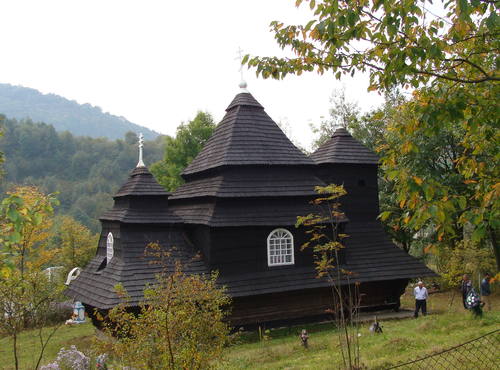Situated in the eastern fringe of Central Europe within the Polish and Ukrainian Carpathian mountain range, the transnational property numbers a selection of sixteen churches. They were built of horizontal wooden logs between the 16th and 19th centuries by communities of Orthodox and Greek Catholic faiths. The churches bear testimony to a distinct building tradition rooted in Orthodox ecclesiastic design interwoven with elements of local tradition, and symbolic references to their communities’ cosmogony. Interior polychrome decorations of iconostasis screens and other historic furnishings make an integral part the old buildings. Important elements of some churches include wooden bell towers, churchyards, gatehouses and graveyards.
Read: Sacral Places of Power in Ukraine

Photo: © V. Slobodyan (via UNESCO)
The architectural forms of the churches with untypical for the rest of Ukraine pyramidal domes, cupolas and bell towers conform to the requirements of Eastern liturgy while reflecting the cultural traditions of the local communities, developed separately due to the mountainous terrain. Built using the horizontal log technique with complex corner jointing, and exhibiting exceptional carpentry skills and structural solutions, the churches were raised on wooden sills placed on stone foundations, with wooden shingles covering roofs and walls.

Photo: © V. Slobodyan (via UNESCO)
Read: Lala Tarapakina and her “Znaydeno v Ukrayini” travel project
The structures, designs and decorative schemes are characteristic for the cultural traditions of the resident communities in the Carpathian region. They illustrate a multiplicity of symbolic references and sacred meanings related to the traditions of the region and reflect the sacred references of the resident communities. These wooden churches bear exceptional testimony to a distinct ecclesiastical building tradition, which make them a part of UNESCO World heritage in the Carpathians.







